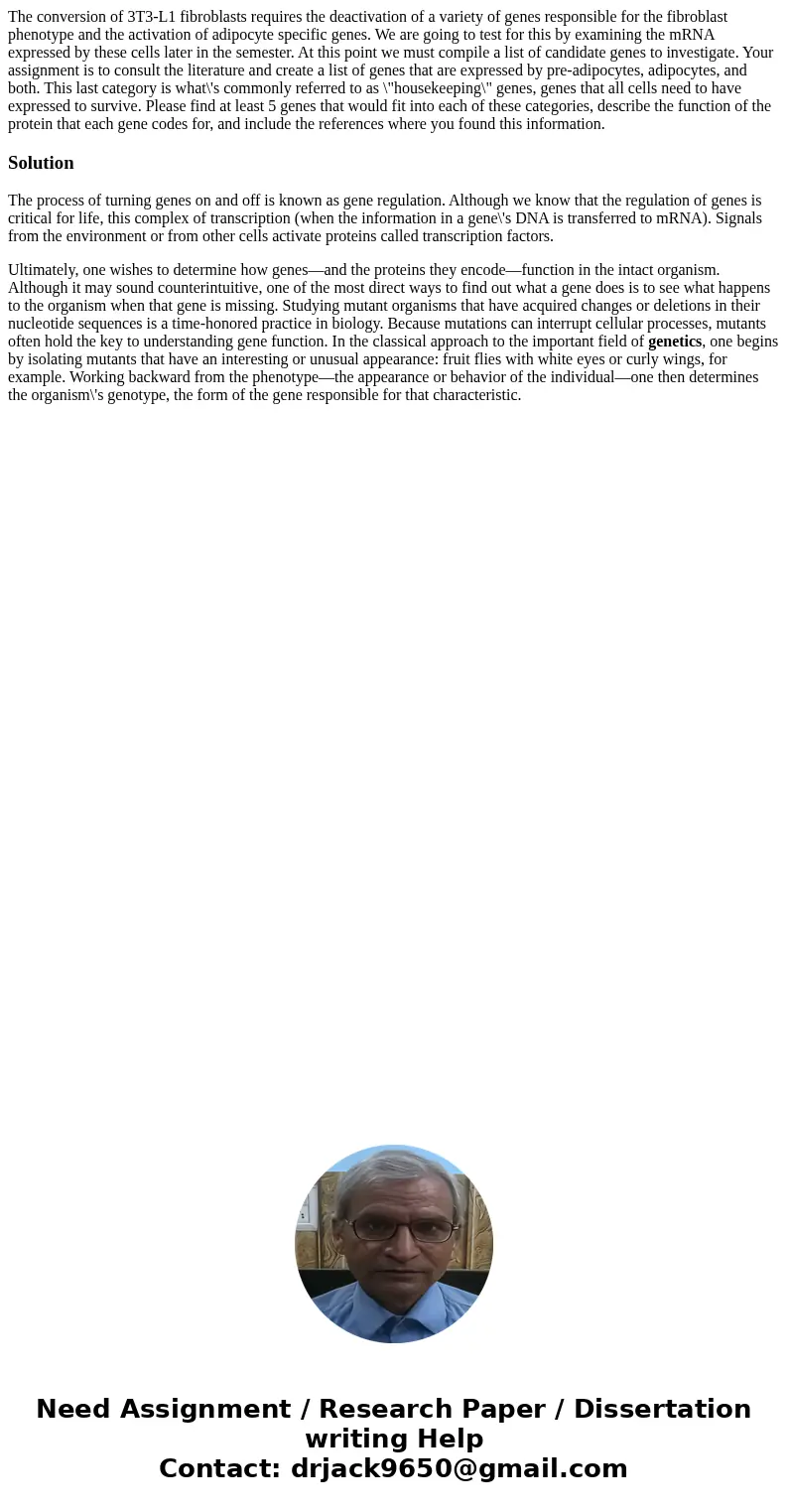The conversion of 3T3L1 fibroblasts requires the deactivatio
The conversion of 3T3-L1 fibroblasts requires the deactivation of a variety of genes responsible for the fibroblast phenotype and the activation of adipocyte specific genes. We are going to test for this by examining the mRNA expressed by these cells later in the semester. At this point we must compile a list of candidate genes to investigate. Your assignment is to consult the literature and create a list of genes that are expressed by pre-adipocytes, adipocytes, and both. This last category is what\'s commonly referred to as \"housekeeping\" genes, genes that all cells need to have expressed to survive. Please find at least 5 genes that would fit into each of these categories, describe the function of the protein that each gene codes for, and include the references where you found this information.
Solution
The process of turning genes on and off is known as gene regulation. Although we know that the regulation of genes is critical for life, this complex of transcription (when the information in a gene\'s DNA is transferred to mRNA). Signals from the environment or from other cells activate proteins called transcription factors.
Ultimately, one wishes to determine how genes—and the proteins they encode—function in the intact organism. Although it may sound counterintuitive, one of the most direct ways to find out what a gene does is to see what happens to the organism when that gene is missing. Studying mutant organisms that have acquired changes or deletions in their nucleotide sequences is a time-honored practice in biology. Because mutations can interrupt cellular processes, mutants often hold the key to understanding gene function. In the classical approach to the important field of genetics, one begins by isolating mutants that have an interesting or unusual appearance: fruit flies with white eyes or curly wings, for example. Working backward from the phenotype—the appearance or behavior of the individual—one then determines the organism\'s genotype, the form of the gene responsible for that characteristic.

 Homework Sourse
Homework Sourse